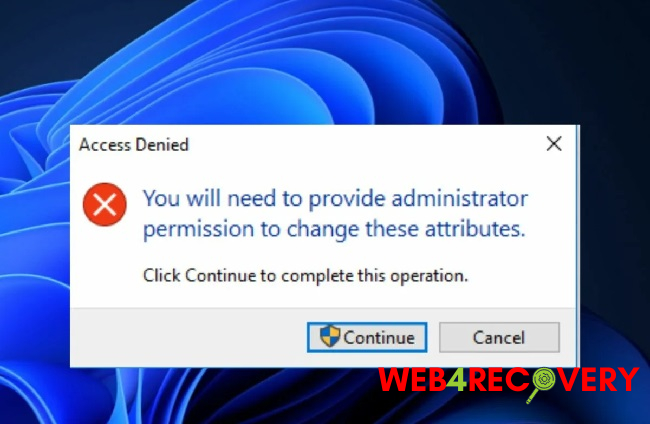Interacting with files and folders on a Windows computer sometimes requires administrative permissions.
You may come across prompts like “You’ll need to provide administrator permission to delete this folder” or “You’ll need to provide administrator permission to copy this file.”
This article will guide you on how to navigate these permissions in Windows 10 and the newly released Windows 11, empowering you to manage your files and folders effectively.

Administrator Permission for Deleting Folders
Certain folders in your Windows system, especially those linked to system files or applications, are protected by administrative permissions. Here’s how to navigate this:
Taking Ownership of the Folder
One method to bypass the permission prompt is to take ownership of the folder:
- Right-click on the folder and select ‘Properties’.
- Go to the ‘Security’ tab and click ‘Advanced’.
- At the top, you’ll see ‘Owner’. Click ‘Change’.
- Type your username in the box and click ‘Check Names’. Click ‘OK’.
- Tick the box ‘Replace owner on subcontainers and objects’. Click ‘Apply’, then ‘OK’.
- You should now have the necessary permissions to delete the folder.
Administrator Permission for Copying Files
When you’re attempting to copy certain protected files, you might see the prompt “You’ll need to provide administrator permission to copy this file.” Here’s how you can grant these permissions:
Alter the User Account Control (UAC) Settings
The UAC is a feature in Windows that helps prevent unauthorized changes to your computer. By altering the UAC settings, you can eliminate the need for administrator permission:
- Type ‘UAC’ into the search box and select ‘Change User Account Control settings’.
- In the UAC settings, move the slider to ‘Never notify’ and click ‘OK’. You may need to provide administrator permission to change these settings.
- Restart your computer for the changes to take effect.
Caution: Disabling UAC reduces the level of security and is not recommended for inexperienced users.
Navigating Administrator Permissions in Windows 11
The procedures for managing administrator permissions in Windows 11 are largely similar to Windows 10.
Use the Windows 11’s Enhanced Context Menu
Windows 11 has introduced an enhanced context menu that simplifies the process of granting administrator permissions:
- Right-click on the folder or file you wish to delete or copy.
- Choose ‘Show more options’ to open the classic context menu.
- Select ‘Run as administrator’ to execute the task with administrative permissions.
In conclusion
Encountering administrator permission prompts while deleting folders or copying files in Windows 10 or 11 can be a hurdle.
However, by understanding how to take ownership of folders, adjusting UAC settings, and leveraging the enhanced context menu in Windows 11, you can efficiently manage your files and maintain a smooth workflow.
Always remember to exercise caution when adjusting security settings or taking ownership of system-protected folders to maintain the integrity of your system.

















